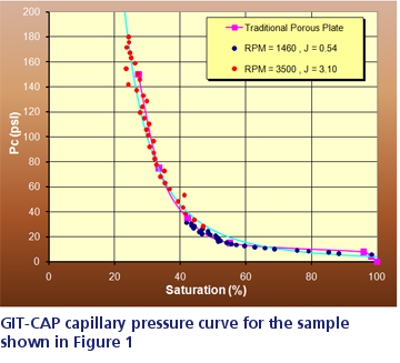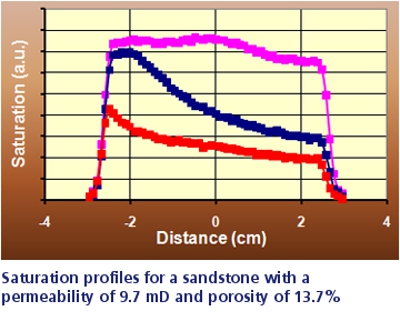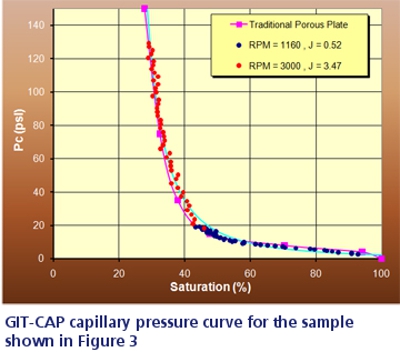2021-3-03 15:16
毛细管压力是石油勘探和制造业中的重要参数,是岩芯分析实验室常用的测量手段。但是,传统多孔板、离心、注汞等工艺费力、费时,价格不菲。
获得专利授权的 GIT-CAP 毛细管测压技术将毛细管压力理论与通过核磁共振测定的饱和度情况相结合,可以确定毛细管压力的精准曲线。采用这种技术时,芯塞先浸润饱和盐水,然后离心。离心力作用下,芯塞中形成流体分布,而该分布情况取决于毛细管压力。
用 GIT-CAP 方法测量毛细管压力比用传统方法测量的速度要快很多,针对平衡所需时间较久的低渗透样品的测试,节约更多时间。它们还提供了数量更多的数据点,从而能够更准确地预测孔隙喉道分布、润湿性和相对渗透率等其他参数。
常规结果如以下两个砂岩样品图所示。

Saturation profiles for a sandstone sample with a permeability of 20.4mD and porosity of 5.74% (Figure 1)

GIT-CAP capillary pressure curve for the sample shown in Figure 1

GIT-CAP capillary pressure curve for the sample shown in Figure 1

Saturation profiles for a sandstone with a permeability of 9.7mD and porosity of 13.7% (Figure 3)

GIT-CAP capillary pressure curve for the sample shown in Figure 3
领域:原油
标签:核磁共振, 毛细管压力